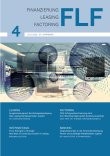INTERNATIONAL
From Strength to Strength
Nine Years of Continuous Growth in Leasing
Brendan Gleeson, Foto: White Clark Group
The 41st Global Leasing Report, released by White Clarke Group in association with theWorld LeasingYearbook, is the definitive guide to the world's top 50 leasing markets.The report provides a leading analysis of country trading environments and trends in auto and equipment finance. Highlights show that the global leasing industry has grown by 131% in the past nine years- from 2010 to 2018. The White Clarke Group Global Leasing Report continues a history of tracking the worldwide market …
Dieser Artikel ist Teil unseres Online-Abo Angebots.

